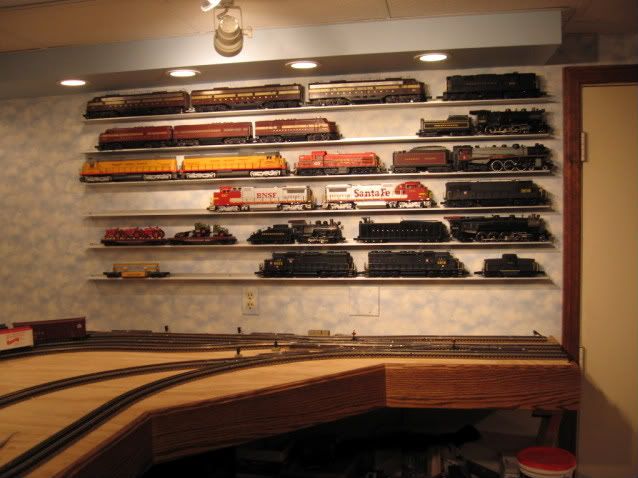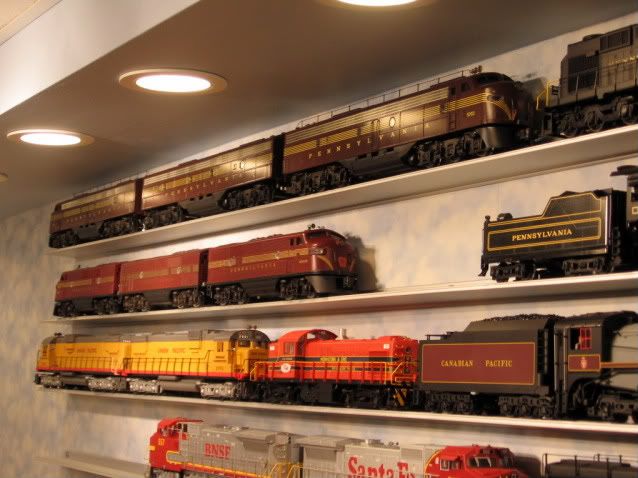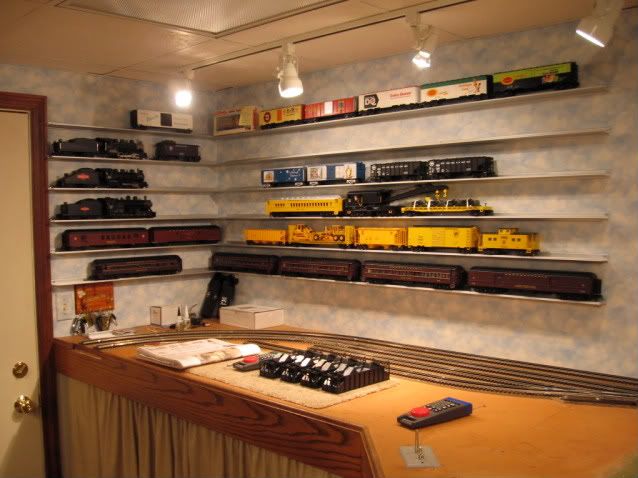You could use the regulated 12VDC supply from a PC power supply, but keep the amount of current in mind. 50W at 12 V = 4.16 A per lamp.
(V*A=W, W/V= 50/12 = 4.16 A) So a power supply with a 15 Amp 12VDC supply could only run three lamps. Plus, some PC power supplies don't like to run with imbalanced loads (they have complicated DC switching circuits inside) Early switchers wouldn't run at all with no or small loads on some supplies. If you had an original PC AT without a hard disk, it had a power resistor where the disk went so that the switcher would function properly. Remove the resistor and the computer wouldn't start...
So you'd be limited by the power supply for more than a few bulbs. You'd want a load below the rated output to keep things safe, too. But light bulbs don't need DC, and they don't need a regulated supply. Really all you need is a transformer. Just get one that has the VA rating that you need for all your lamps, plus a margin for safety. 12VAC transformers are plentiful, and not expensive, but you'll then need to do the
wiring yourself. And if you find a nice transformer, you can always get more than one and run the primaries in parallel (no need to parallel the secondaries, just split up the load appropriately).
-Mark


 The MR 16 and similar designed lamps are focal point lighting. Example: To high- light the single rose in the center of a table for two on that special night out. It usually takes a combination of spot lights and flood light to completely illuminated a display, which lends to track lighting, where units can be moved and adjusted for specific effects. MR16 as well as being hot also have short life because of the heat. I use a combination of PAR 16 60 watt 130 volt and PAR 20 50 watt 130 volt lamps for illumination. Fixture cost was considerable less, when you are not buying a transformer per fixture.
The MR 16 and similar designed lamps are focal point lighting. Example: To high- light the single rose in the center of a table for two on that special night out. It usually takes a combination of spot lights and flood light to completely illuminated a display, which lends to track lighting, where units can be moved and adjusted for specific effects. MR16 as well as being hot also have short life because of the heat. I use a combination of PAR 16 60 watt 130 volt and PAR 20 50 watt 130 volt lamps for illumination. Fixture cost was considerable less, when you are not buying a transformer per fixture.

